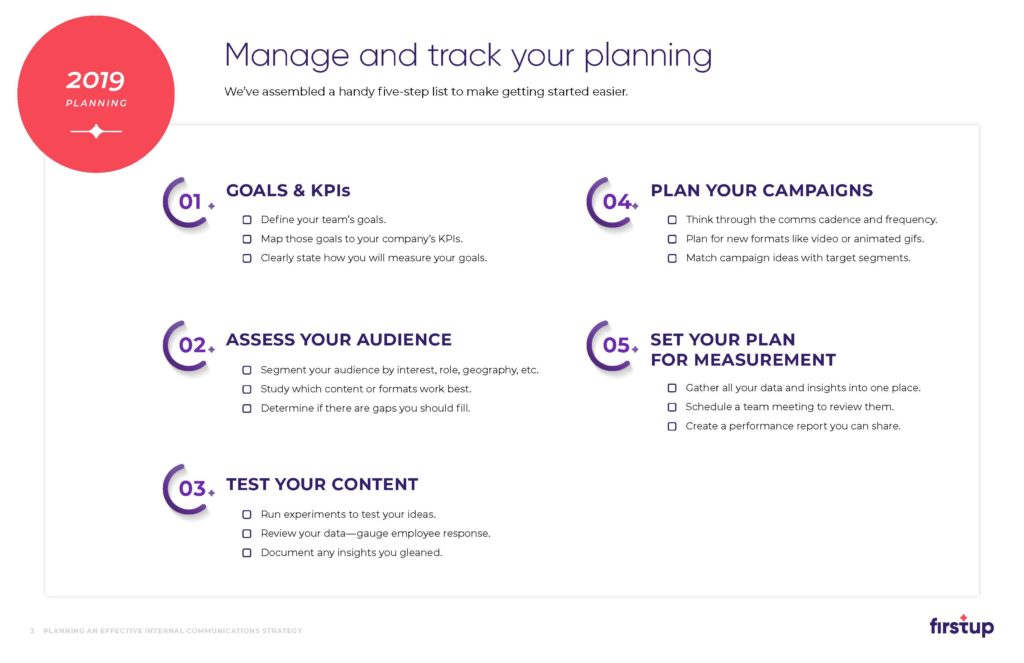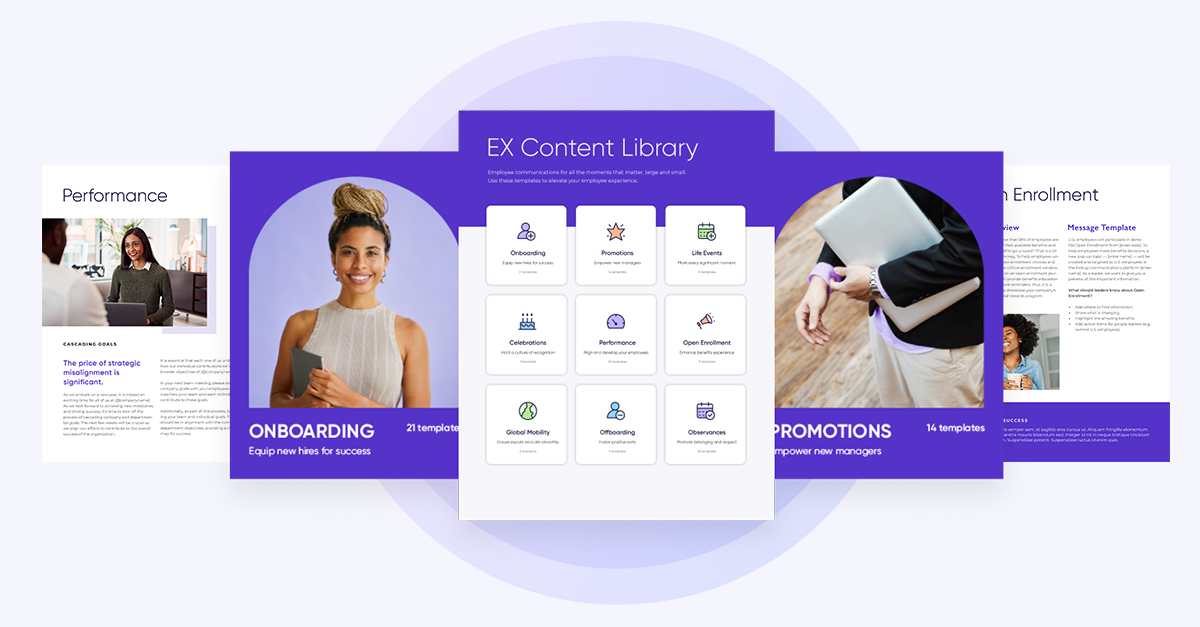How to create your employee communications plan
There’s never a bad time to invest in your internal communications plan, especially if it hasn’t been updated for some time. You may want to reexamine your employee benefits or implement new sales targets.
By setting your internal communications objectives first, you’ll be able to set clear goals and measure your success. To truly make an impact, form a strategy that also aligns to your larger organizational objectives.
Here’s a handy five-step checklist to help you get started.

If you’re ready for more templates, download our latest guide now, 7 Templates for Planning an Effective Internal Communication Strategy.
1. Establish your goals and KPIs.
Begin by defining your team’s goals and KPIs. This way, you’ll know what initiatives are most important.
For example, you could start with quarterly targets and then work toward a year-long plan. Be sure these goals align to your organization’s larger strategic objectives. This is critical to understand how your team and work help the company succeed. Also, clearly specify what success will look like and how you’ll measure your goals.
2. Assess your audience.
Simply put, understanding your employees by studying available data about them removes a lot of guesswork and strategizing by gut instinct. In order to deliver a seamless employee experience (much like customer experience), you need to know your workforce’s nuances. In this digital age, the one-message-for-all model just isn’t effective.
Assessing your audience involves a few simple steps; the first is to create employee personas, and learn what different groups of workers value and need to thrive. Next, study which content or formats work best, such as video, engagement apps, email, etc. This will help you create a multi-channel approach that will reach employees, no matter their geographic location or department.
3. Test your employee communications plan.
Consider what content has worked in the past, and what hasn’t. After you’ve assessed your audience, propose some new experiments to improve your internal communications. Then, track your metrics to understand if your tests were successful. This insights-driven method will help you determine what’s best for specific groups and help you reach your goals.
4. Plan your initiatives and programs.
Think through your workplace communications cadence and frequency. Incorporate new formats like animated gifs and video, which have a 3x higher click-through rate than written content, and then match initiatives with target segments.
5. Set your plan for measurement.
As you select the best channels for your programs, choose the right metrics and KPIs. For example, if you’re publishing content on your company’s employee app, you’ll track post engagement, shares, and impressions.
Collect your data and insights into one place, and review regularly(weekly, monthly, or quarterly). When you present results to stakeholders, use the power of storytelling to give context to your data; this will help you prove your team’s value.
Here’s a sample plan below.
And if you need more inspiration, check out our recent guides:
7 Templates for Planning an Effective Internal Communication Strategy






